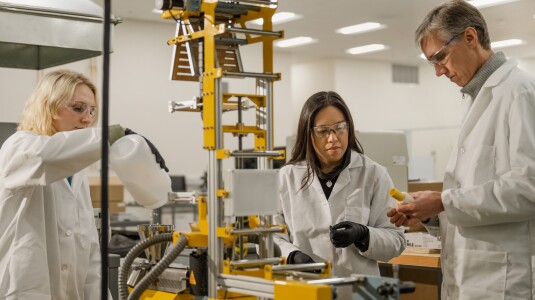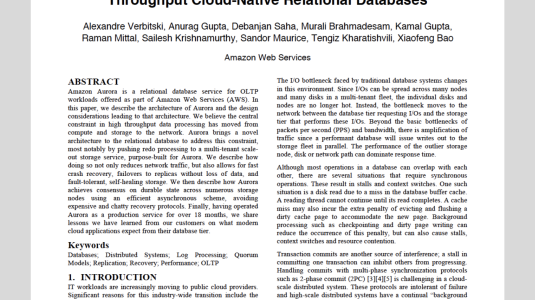The recent heatwave in Europe is an unequivocal reminder that we are facing a critical moment in the effort to tackle climate change. This urgent global challenge demands collective action across all industries and sectors. While many policies and actions from the private sector provide a foundation to build on, the forward-looking path to full decarbonization won’t always be linear.

For decades, the Intergovernmental Panel on Climate Change has sounded the alarm for ambitious action to reduce greenhouse gas (GHG) emissions. This led to the 2015 signing of the Paris Agreement, which provides a unified direction for national governments to reach the global peaking of GHG emissions as soon as possible to achieve a net-zero world by 2050. In parallel, private companies, such as Amazon, have ramped up decarbonization efforts.
With continuous investments globally in renewable energy, sustainable transport, and a more efficient built environment, we should expect to see progress across economic sectors in efforts to tackle climate change. However, there are many factors that can hamper or expedite reduction efforts.
Amazon releases 2021 sustainability report
Amazon's 2021 sustainability report, released today, reports that in 2020, Amazon became the world’s largest corporate purchaser of renewable energy, and in 2021, Amazon reached 85% renewable energy across its businesses. Read the full report.
Companies with net-zero targets need to navigate new technologies and processes, changes in the economy, and future market uncertainties as they implement measures to reduce their GHG emissions. While these challenges apply to all entities, from mature and established companies to new and fast-growing startups, those companies experiencing fast growth may face an even more challenging task as they navigate to quickly decouple their GHG emission trajectories from their financial performance.
To track this progress, GHG intensity metrics (e.g., CO2 equivalent, or CO2e, emitted per kilowatt-hour of electricity generated, or CO2e emitted per sale) are useful tools. These measurements provide transparency to enhance the credibility of companies’ reduction targets, and they help leaders understand emission trajectory trends and target hotspots within their carbon footprints that require increased attention to accelerate emission reductions.
A complex task
It should also be clear that achieving GHG intensity improvements is not an easy or straightforward task. For example, assume that a significant source of the GHG emissions from a company such as Amazon is the operation of diesel trucks. To reduce those trucks’ GHG intensity, Amazon can improve asset utilization, routing, network design, and other logistical procedures. The company can further reduce its GHG intensity by using lower-intensity fuels such as renewable diesel or replacing the trucks with zero- or near-zero-emission vehicles.
How Amazon learned to cut its cardboard waste
For more on Amazon’s sustainability efforts, read how Amazon’s pioneering web-based PackOpt tool has resulted in an annual reduction in cardboard waste of 7% to 10% in North America, saving roughly 60,000 tons of cardboard annually.
For companies selecting the latter route, factors related to technology development, market readiness and offerings (e.g., supply of electric trucks in the marketplace), or the availability of supporting infrastructure (e.g., charging facilities, renewable gas, hydrogen, and grid capacity) might be out of their control. While companies have a strong responsibility to send demand signals, ultimately, a multitude of factors will determine whether the emissions and intensity improvements are executed in a smooth and linear fashion (e.g., when technologies are ready and available for implementation) or not.
Considering that transportation is a large contributor to Amazon’s emissions, the company has been leveraging technological innovations and investing in internal operational and technical improvements to make it more sustainable. Amazon has made significant investments in renewable and clean energy at facilities and became the world’s largest corporate purchaser of renewable energy, and it cofounded major efforts to accelerate the decarbonization of aviation and maritime shipping.
Notably, in 2019, Amazon cofounded the Climate Pledge — a commitment to reach net-zero carbon by 2040, 10 years ahead of the Paris Agreement — and over 300 other companies have signed the pledge so far. Pledges such as these are only valid and trustworthy when companies then begin to take immediate and actionable steps to decarbonize their operations.
In 2019, Amazon cofounded the Climate Pledge — a commitment to reach net-zero carbon by 2040, 10 years ahead of the Paris Agreement.
Operationally, Amazon has implemented several emissions reduction initiatives, including new delivery modes such as the recently announced cargo bike hub for last-mile deliveries in London; developed its Flex program, which enables individuals to use their personal vehicles to deliver customer packages, and invested in companies developing the next generation of zero-emission delivery vehicles, such as Rivian, from which Amazon ordered 100,000 electric vans.
Despite Amazon’s and other companies’ efforts to meet their net-zero commitments, they will continue to face challenges, as some required infrastructure improvements and technological developments may be out of their operational control, requiring policy changes, government intervention, and large-scale infrastructure changes. For example, in long-haul shipping, there is no clear winner between potential technologies (e.g., battery electric and fuel cell electric), and improvements in aviation fuels are just beginning. Even with a more readily available supply of sustainable aviation fuel, airports will have to rapidly change infrastructure to bring this solution to the aircraft they serve.
These issues not only affect the decision to rely on a particular technology but contribute to uncertainties about the investments required to support that technology (e.g., private or public charging-and-fueling infrastructure). When deciding on decarbonization pathways, companies and other entities have to consider these technological challenges, anticipate the required investments, and recognize the need for complementary operational improvements, as just waiting for technologies to be ready is not an option.
The urgency of reducing GHG emissions requires governments, companies, academics, civil-society organizations, and the public to work together, as individual efforts are not enough. Regulators need to continue providing the market conditions for emissions reduction and enabling regulatory consistency across regions. The public has to continue to play its part as a driver of decarbonization and assume responsibility for being carbon contributors. Companies have to make substantial commitments, reconsider metrics used to evaluate investments, leverage science and new technological developments, and not be afraid to take risks.
Ultimately, for Amazon and other companies with net-zero commitments, the demand for, pricing of, and availability of new technologies, proven at scale and competitive with incumbent solutions, will determine the smoothness and speed of the long-term path to decarbonization. It is no doubt difficult to meet this goal, but the planet does not have other options. I have confidence that the current pace of innovation, public commitments, and investments will enable all economic sectors to achieve the emissions reductions goals that are required by climate science.
















